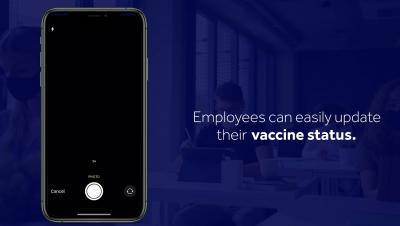Systems | Development | Analytics | API | Testing
Low Code
5 Elements of Workplace Safety from Healthcare Leaders
As COVID-19 vaccinations continue to roll out, organizations across industries prepare to return employees to the workplace. It’s a journey fraught with anxieties, uncertainty, and unknowns. In a recent poll of Appian webinar participants, a mere 17% reported that their companies feel fully prepared to reopen facilities, and only 51% said they felt even “somewhat” prepared. The good news is that a safe return to the workplace is not uncharted territory.
Straight Talk, No Chaser: How to Jumpstart Your Hyperautomation Journey, Part 2
Hyperautomation is about making humans more human. So said automation expert Arjun Devadas in the first episode of this two-part post on hyperautomation. (Read part one here). Devadas—who serves as Senior Vice President, Professional Services & Operations, Americas at Vuram, a hyperautomation services company—debunked a few myths and spilled some pragmatic tea on how to get the most out of your hyperautomation journey.
Grifols: Creating Flexibility and Speed through a Unified Data System
Low-Code Automation, Pop-Culture Icons, and Keeping up with Post-COVID Risk, Part 2
When the COVID-19 crisis hit, guidelines for responding to a global pandemic probably weren't in your company’s disaster recovery playbook. But that probably changed after the pandemic fired up a remote-work revolution that has also accelerated business process automation across industries. Yes, we’re almost on the other side of the pandemic. But future crises are unavoidable. And the next one could be worse than the one we’re experiencing now.
Deloitte Tech Trends and Appian
Every year Deloitte comes out with its annual Tech Trends, which provide “insights and inspiration for the digital journey ahead.” They aim to identify opportunities that are likely to transform businesses over the next 18-24 months. This year we couldn’t help but picture the important role that Appian can play in helping our customers capitalize on these trends. Let’s discuss two of these trends.
Straight Talk about Low-code
Business leaders are increasingly turning to IT organizations to help drive digital transformation through automation and innovation across lines of business. These leaders are selecting, implementing, and maintaining technology investments that support their businesses, while keeping IT costs down. Unfortunately, escalating technical debt and a lack of skilled talent are preventing IT from being as impactful as it could be.
Accelerate Business Value with BPaaS Transformation and Low-code Automation Platforms
The COVID-19 pandemic has disrupted organizations around the world in many ways. Changing government regulations have created challenges for businesses and customers as they try to comply with mandates. As a result, customers have shifted their demands to digital channels for accessing goods and services. Business operations have also hit road bumps as their workforces may have decreased and/or have limited capacity working from home.
The Top 4 Supply Chain Trends for 2021
In response to the many disruptions across supply chains over the past year, new trends are emerging and others are gaining more traction to help bolster resilience in this space. Organizations are pivoting operations, leveraging different resources, and taking advantage of new technologies to streamline their supply chain orchestration moving forward.
Solving 3 Common IT Challenges with Low-Code
In 2020, companies had just a few short months to transform the way they conducted business in response to the COVID-19 pandemic. IT had to find new, more efficient ways to deliver powerful software applications that would keep businesses running. At the same time, IT teams continued to deal with three key challenges that plague every company: 1. Lack of developers. 2. Lack of time. 3. Lack of alignment between business leaders and IT.




